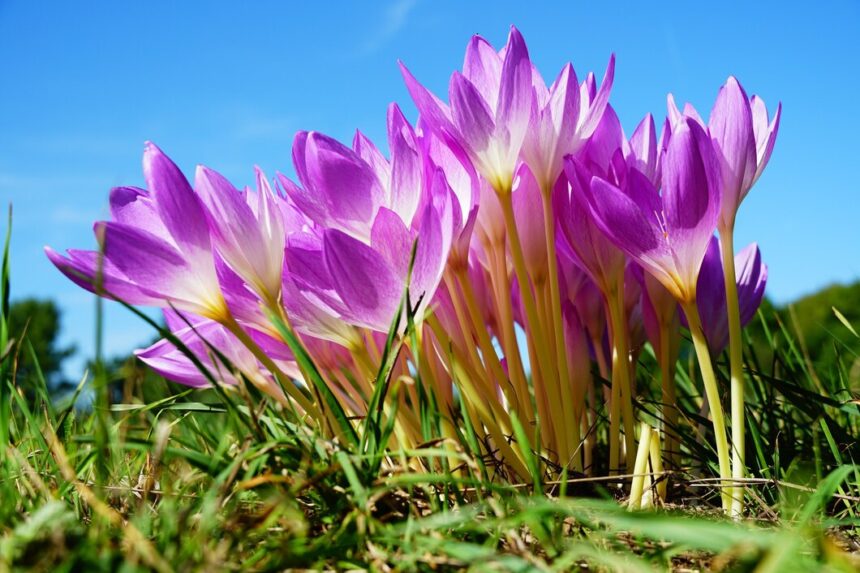Saffron crocuses (Crocus sativus) are renowned for their delicate beauty and valuable spice, but they require specific care to thrive. Overwatering is a common issue that can lead to several problems. Recognizing the early signs of overwatering is crucial for maintaining the health of your saffron crocuses. Here are ten early indicators that your saffron crocuses may be receiving too much water:
- Yellowing Leaves: One of the first signs of overwatering is yellowing foliage. Healthy saffron crocuses typically have green, vibrant leaves. If you notice them turning yellow or brown, it could be a sign of root distress due to excessive moisture.
- Soft, Mushy Bulbs: Overwatered saffron crocus bulbs often become soft and mushy. Healthy bulbs should be firm and dry to the touch. If they feel squishy or show signs of rot, it’s a clear indication of too much water.
- Root Rot: Examine the roots if you suspect overwatering. Root rot manifests as brown or black, slimy roots. Healthy roots are white or light-colored and firm. Rotting roots can hinder the plant’s nutrient uptake and overall growth.
- Stunted Growth: Excess water can stunt the growth of saffron crocuses. If your plants are not growing as expected or appear to be lagging behind in their development, overwatering might be the cause.
- Wilting Despite Moist Soil: Wilting leaves despite the soil being moist can be a sign of root problems caused by overwatering. The roots may not be functioning properly to take up water, leading to visible wilting.
- Fungal Growth: Overly wet conditions create a favorable environment for fungal growth. Look for mold, mildew, or other fungal infestations around the base of your saffron crocuses or on the soil surface.
- Unpleasant Odor: A sour or musty smell from the soil can indicate root rot caused by overwatering. Healthy soil should have a neutral, earthy smell. An unpleasant odor suggests that the soil is overly wet and decomposing.
- Leaf Drop: If your saffron crocuses are dropping leaves prematurely, it could be due to overwatering. The excess moisture can weaken the plant, leading to leaf drop and reduced vitality.
- Soil Saturation: Consistently saturated soil is a red flag. Saffron crocuses prefer well-drained soil. If the soil remains wet and does not dry out between waterings, it can lead to overwatering issues.
- Poor Flowering: If your saffron crocuses are not producing flowers or have fewer flowers than usual, overwatering could be to blame. The stress from excess moisture can affect the plant’s ability to bloom properly.
To prevent overwatering, ensure your saffron crocuses are planted in well-drained soil and adjust your watering schedule based on the weather and soil conditions. It’s crucial to let the soil dry out slightly between waterings and avoid leaving the bulbs in standing water. By monitoring these signs and adjusting care accordingly, you can help ensure that your saffron crocuses remain healthy and productive.
Join 'Farmers Mag' WhatsApp Channel
Get the latest Farming news and tips delivered straight to your WhatsApp
CLICK HERE TO JOIN






